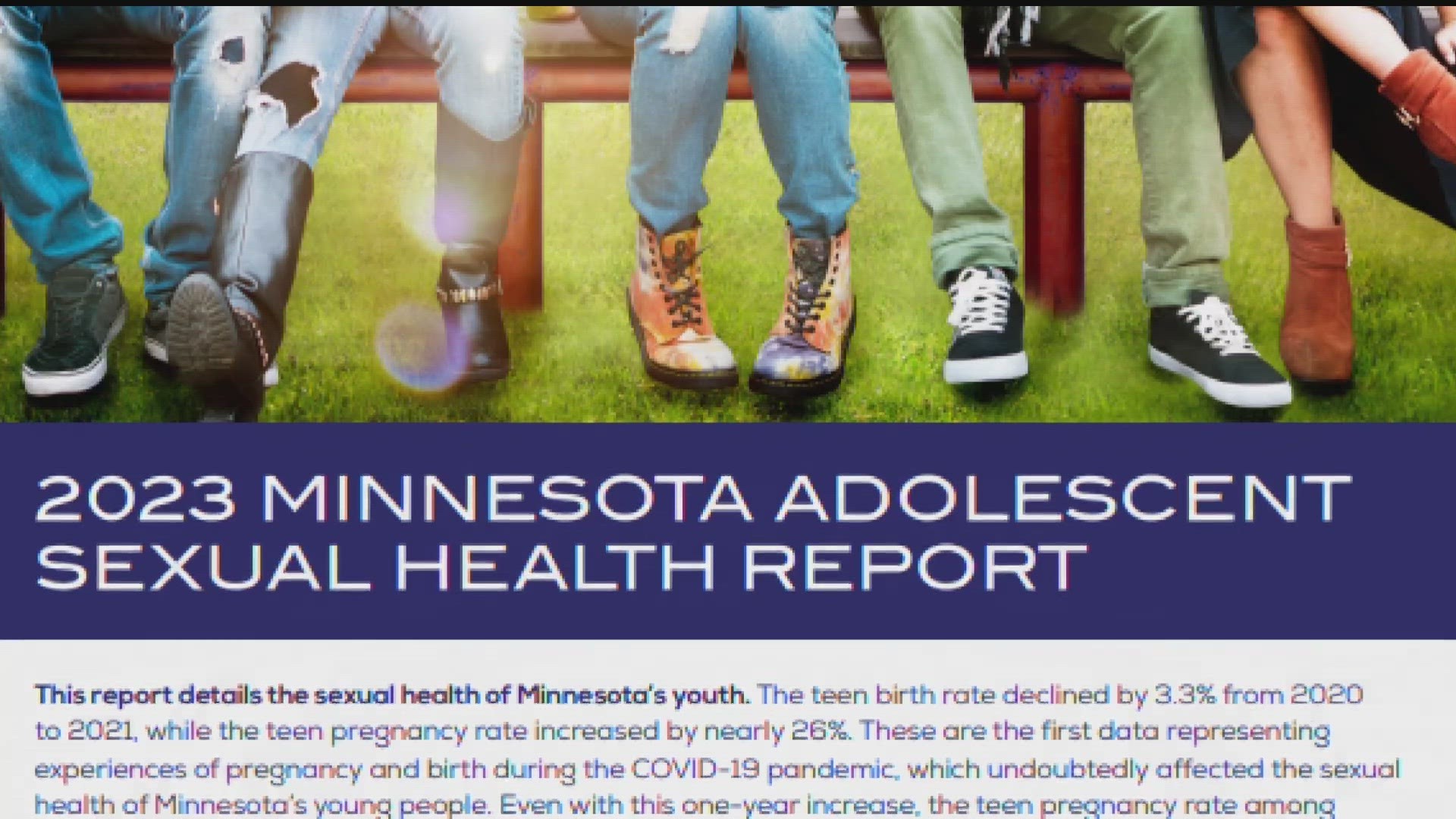MINNEAPOLIS, Minnesota — The University of Minnesota Medical School's Healthy Youth Development - Prevention Research Center (HYD-PRC) released its annual report on the sexual health of the state's youth.
It's also the first data representing young people's experiences of pregnancy and birth during the COVID-19 pandemic.
According to the report, sexually transmitted infection (STI) rates continued to decline in 2022. However, although Minnesota youth ages 15-19 account for only 6.5% of the population, they account for 24% of the chlamydia and 14% of the gonorrhea cases in Minnesota last year.
"Is it actually going down, or we are seeing less testing happening among all people, but I think, especially young people," asked Jill Farris, director of Adolescent Sexual Health Training and Education at HYD-PRC. "There probably is less infection and also I think there's also a lot less testing than there was in 2019, for example."
The report found that the pregnancy rate among 15-19 year-olds increased by nearly 26% from 2020 to 2021, while the birth rate declined by 3.3%.
"Even with this one-year increase, the teen pregnancy rate among 15–19-year-olds has declined by 71.2% since 1990," according to the report.
But despite still historically low numbers, Farris said the new numbers reveal some notable trends.
"What we saw that was really unusual this year is that usually these two trends follow each other and if the pregnancy rate goes down, so does the birth rate. Or if one goes up, the other one goes up. This year the birth rate went down slightly but the pregnancy rate actually went up and so what that suggests to us is that more young people decided to terminate pregnancies in that year of 2021 than had been the case in the years coming up to that," Farris said.
The report includes recommendations on how to support youth and stressed the need for access to education and services.
"It definitely does sort of beg the question of what young people had access to during the pandemic, and what it really seems like, is that young people probably continued sexual relationships and continued having sex, but access to contraception and condoms might've been lacking or have been less than it normally was because of schools being closed, and if kids use their school-based health clinic, for example," Farris said.
The report also pointed out the racial/ethnic disparities that exist. For example, the birth rate for American Indian adolescents is over six times higher than for their white peers. There are also geographic disparities with birth and pregnancy rates higher in greater Minnesota.
Farris said the report is one resource that can be used to help address these disparities, saying, "How can we provide and create services and programs that really fit the needs of young people but also are following the data, and following the trends, and what the trends say we should be doing?"
You can read the full report, here.
WATCH MORE ON KARE 11+
Download the free KARE 11+ app for Roku, Fire TV, Apple TV and other smart TV platforms to watch more from KARE 11 anytime! The KARE 11+ app includes live streams of all of KARE 11's newscasts. You'll also find on-demand replays of newscasts; the latest from KARE 11 Investigates, Breaking the News and the Land of 10,000 Stories; exclusive programs like Verify and HeartThreads; and Minnesota sports talk from our partners at Locked On Minnesota.
- Add KARE 11+ on Roku here or by searching for KARE 11 in the Roku Channel Store.
- Add KARE 11+ on Fire TV here or by searching for KARE 11 in the Amazon App Store.
- Learn more about the KARE 11+ app for Apple TV in the Apple App Store.
- Learn more about KARE 11+ here.
Watch more local news:
Watch the latest local news from the Twin Cities and across Minnesota in our YouTube playlist:

